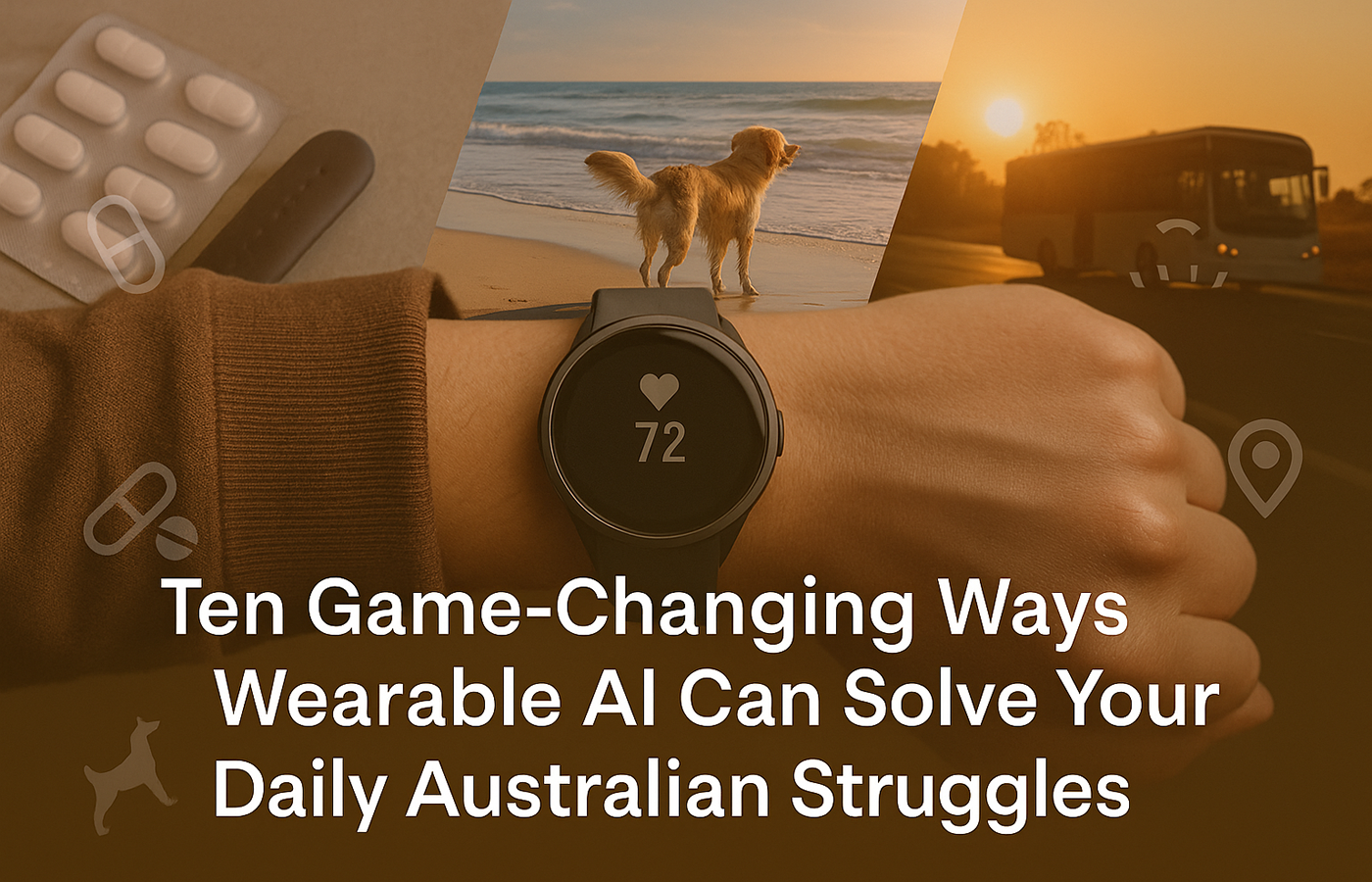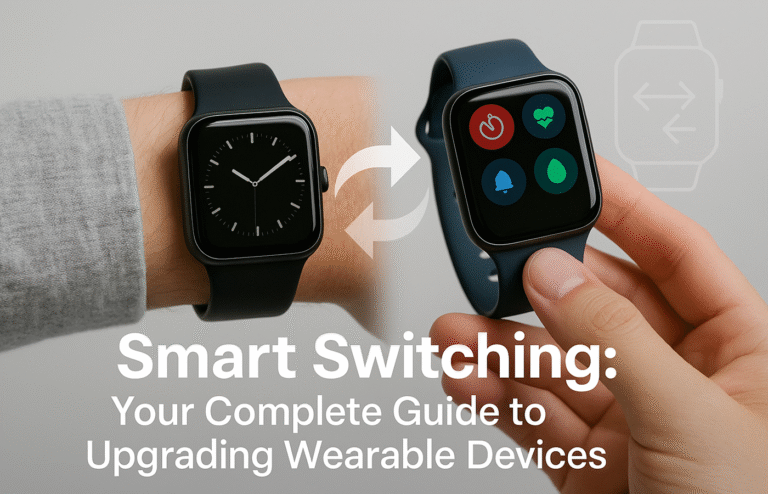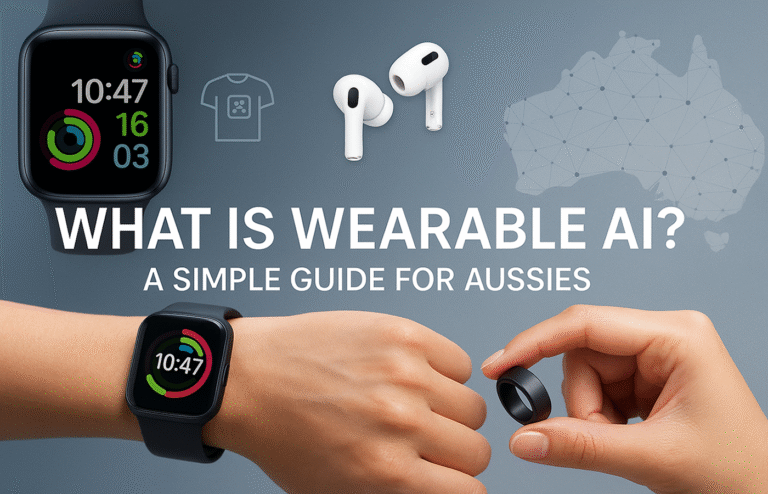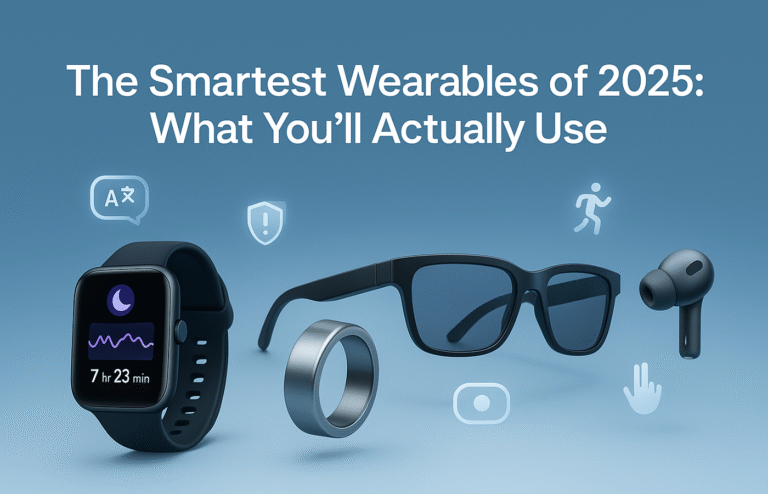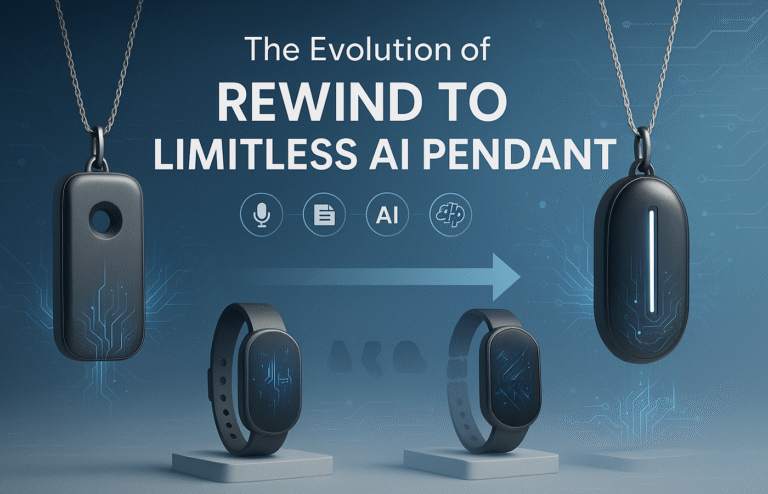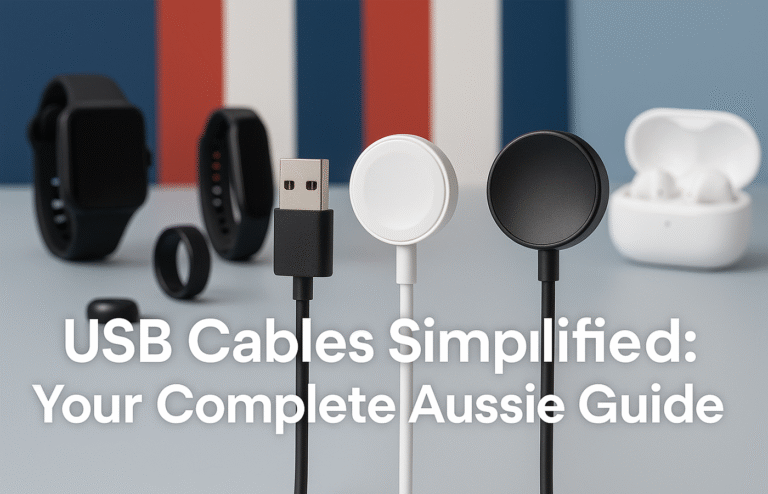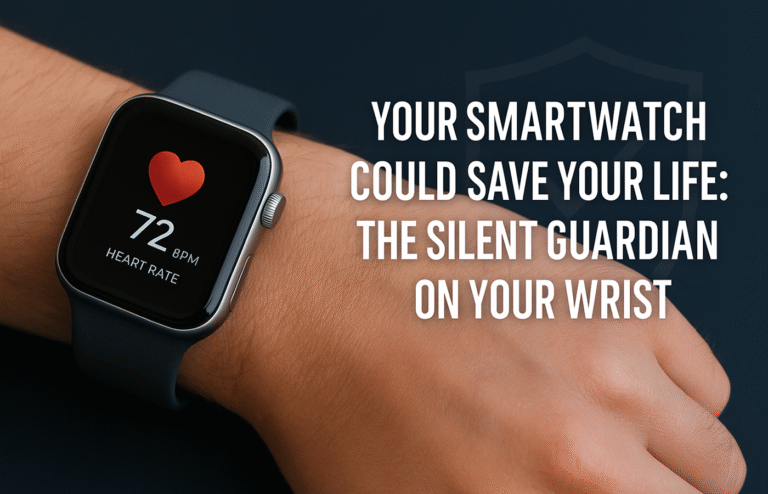Ten Game-Changing Wearable AI Solutions for Daily Australian Struggles and Challenges
Wearable AI devices solve uniquely Australian problems from extreme UV exposure to shift work challenges, transforming daily annoyances into seamless automated experiences.
Health & Safety Solutions:
● Medication reminders for FIFO and shift workers monitoring circadian rhythms (Fitbit Sense 2: $429 AUD)
● UV exposure monitoring preventing skin cancer during outdoor work and beach activities
● Construction site heat stress monitoring alerting supervisors before dangerous situations develop
● Hydration tracking personalised for Australian extreme temperatures and activity levels
Daily Convenience:
● Hands-free shopping lists using AI earbuds (Apple AirPods Pro 2: $399 AUD) for busy parents
● Public transport timing displayed in smart glasses preventing missed connections whilst walking
● Meeting notes via AI necklaces maintaining eye contact during client conversations
Family Care:
● Elderly parent monitoring through smart rings (Oura Ring 4: $549, Samsung Galaxy Ring: $699)
● Pet location tracking with geofencing during beach and park visits
Ten Game-Changing Ways Wearable AI Can Solve Your Daily Australian Struggles
Picture this: you’re rushing through Coles with a screaming toddler, trying to remember if you’ve already grabbed milk while juggling your phone, keys, and shopping trolley. Meanwhile, your elderly mum lives alone in Brisbane, and you’re constantly worried about her wellbeing but don’t want to seem overbearing with daily check-ins.
Sound familiar? These everyday frustrations affect millions of Australians, yet most of us haven’t realised that wearable AI technology could already solve many of these problems. While smartwatches and fitness trackers have become mainstream, the latest generation of AI-powered wearables offers solutions that go far beyond step counting.
From managing medication schedules for shift workers to keeping our beloved pets safe at the beach, wearable AI devices are quietly revolutionising how we handle life’s minor but persistent challenges. Let’s explore ten specific pain points that thousands of Australians face daily—and discover how these innovative devices can transform these annoyances into seamless, automated experiences.
Health & Medical Management
1. Medication Reminders for Shift Workers
The Challenge: Australia’s healthcare workers, miners, and FIFO employees struggle with maintaining consistent medication schedules across rotating shifts and multiple time zones.
Traditional phone alarms simply don’t work when your body clock is constantly shifting. A nurse working night shifts one week and day shifts the next faces genuine difficulty knowing when to take medications for optimal effectiveness.
The Wearable Solution: Smart patches and advanced fitness trackers now monitor your circadian rhythms and sleep patterns. These devices vibrate gently and send targeted alerts to your phone, ensuring medications are taken at optimal biological times rather than arbitrary clock times. Some models, like the Fitbit Sense 2 (RRP $429 AUD), already offer stress and sleep tracking that could inform medication timing.
2. Sun Exposure Monitoring
The Challenge: Australia has the world’s highest skin cancer rates, yet people consistently struggle to track UV exposure during outdoor activities.
Whether you’re a tradie working on a construction site or a weekend warrior hitting Bondi Beach, it’s nearly impossible to accurately gauge how much sun you’ve absorbed throughout the day.
The Wearable Solution: Modern smartwatches with integrated UV sensors provide real-time alerts when you’re approaching daily safe exposure limits. The Apple Watch Ultra 2 (RRP $1,249 AUD) and Samsung Galaxy Watch6 (RRP $549 AUD) both offer environmental monitoring features that could be enhanced with dedicated UV tracking apps.
Daily Convenience & Safety
3. Hands-Free Shopping Lists in Supermarkets
The Challenge: Juggling shopping lists, phones, trolleys, and children while navigating Coles or Woolworths creates unnecessary stress and forgotten items.
Every parent knows the struggle of trying to check their shopping list while preventing a toddler from grabbing everything within arm’s reach.
The Wearable Solution: AI-enhanced earbuds allow you to add items by voice command (“Add milk to shopping list”), tick off completed items, and even navigate store layouts without touching your phone. The Apple AirPods Pro 2 (RRP $399 AUD) already offers sophisticated voice control that could easily accommodate shopping list management.
4. Public Transport Timing for Commuters
The Challenge: Sydney, Melbourne, and Brisbane commuters constantly check their phones for real-time transport updates while walking or cycling, creating safety hazards.
Anyone who’s missed a train by thirty seconds while fumbling with their phone knows this frustration intimately.
The Wearable Solution: Smart glasses display live train and bus arrival times, platform changes, and delays directly in your field of vision, keeping your hands free and eyes on the path ahead. While mainstream smart glasses like the Ray-Ban Meta (RRP $449 AUD) are still developing these features, early adopters are already experiencing the convenience.
Workplace Productivity
5. Construction Site Safety Monitoring
The Challenge: Australian construction workers face significant heat stress and fatigue but lack real-time monitoring during demanding physical work.
With Australia’s extreme temperatures and demanding construction schedules, heat-related incidents remain a serious workplace safety concern.
The Wearable Solution: Smart safety vests monitor core temperature, hydration levels, and fatigue indicators, alerting supervisors before dangerous situations develop. These specialised devices integrate seamlessly with existing safety equipment while providing unprecedented health monitoring capabilities.
6. Meeting Notes for Mobile Professionals
The Challenge: Real estate agents, consultants, and sales representatives struggle to take comprehensive notes during client meetings while maintaining eye contact and engagement.
Nothing disrupts rapport like constantly looking down at your phone or notepad during crucial conversations.
The Wearable Solution: AI necklaces and pendants record, transcribe, and summarise conversations automatically, categorising action items and follow-ups without any manual intervention. The Rewind Pendant represents an emerging category of devices designed specifically for this purpose.
Family & Lifestyle
7. Elderly Parent Health Monitoring
The Challenge: Adult children worry about ageing parents living independently but don’t want to appear intrusive with constant check-ins.
This delicate balance between concern and respect for independence affects countless Australian families.
The Wearable Solution: Discreet smart rings monitor daily activity patterns, medication adherence, and emergency situations, sending gentle alerts only when routines change significantly. The Oura Ring 4 (RRP $549 AUD) and Samsung Galaxy Ring (RRP $699 AUD) offer sophisticated health monitoring in an unobtrusive form factor.
8. Pet Location During Beach and Park Visits
The Challenge: Dog owners at Australian beaches and large parks frequently lose sight of their pets, creating anxiety and genuine safety concerns.
Off-leash areas are wonderful for our furry friends but nerve-wracking for owners, especially in unfamiliar locations.
The Wearable Solution: AI-enabled pet collars with geofencing capabilities send immediate alerts when pets wander beyond safe boundaries while providing real-time location tracking. These devices offer peace of mind without restricting your pet’s freedom to explore and play.
Fitness & Wellness
9. Hydration Tracking in Australian Heat
The Challenge: Australians frequently experience dehydration during summer outdoor activities but struggle to track fluid intake accurately.
Traditional advice like “drink eight glasses of water daily” doesn’t account for Australia’s extreme heat, individual activity levels, or varying body compositions.
The Wearable Solution: Advanced smartwatches monitor sweat rate, ambient temperature, and activity intensity to provide personalised hydration reminders. The Garmin Epix Pro (RRP $1,399 AUD) and similar devices already offer sophisticated environmental monitoring that could easily incorporate hydration algorithms.
10. Sleep Quality for Shift Workers
The Challenge: Night shift workers including nurses, security guards, and emergency services personnel struggle with sleep quality due to disrupted circadian rhythms and daytime noise.
Quality sleep becomes exponentially more difficult when your work schedule conflicts with natural light cycles and neighbourhood activity patterns.
The Wearable Solution: Smart sleepwear monitors sleep stages, integrates with smart home systems to optimise room temperature, and provides gentle wake-up alerts during optimal sleep phases. This technology helps shift workers maximise rest quality despite challenging schedules.
Why These Solutions Matter for Modern Australia
These wearable AI applications address uniquely Australian challenges including extreme UV exposure, vast distances, and our distinctive shift work culture. Moreover, they solve problems affecting large population segments—commuters navigating major cities, shift workers across industries, and families caring for ageing relatives.
Importantly, these devices focus on safety and health considerations that are particularly relevant given Australia’s extreme weather conditions and demanding work environments. Rather than replacing our existing smartphone habits, these wearables complement and enhance our current technology usage patterns.
The transformation lies in converting minor daily annoyances into seamless, automated experiences. Instead of constantly managing these small but persistent challenges, wearable AI handles them in the background, freeing us to focus on what truly matters.
As the Australian wearables market grows towards an expected $7.31 billion by 2030, these practical applications demonstrate why wearable AI is evolving from a luxury novelty into an essential daily tool. The technology isn’t just getting smarter—it’s getting more relevant to our everyday Australian lives.

